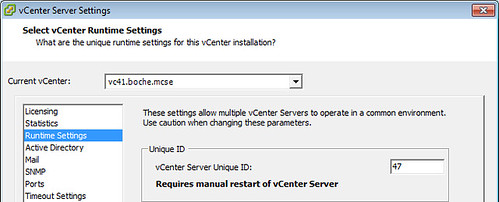Paul Davey of Xtravirt published a VMware networking article a few weeks ago called vCenter MAC Address allocation and conflicts. The article describes the mechanism behind MAC address assignments in vCenter, and more specifically how conflicts are avoided:
When a vCenter server is installed a unique ID is generated. This ID is randomly generated and is in the range of 0 to 64. The ID gets used when generating MAC address and the UUIDS, or unique identifiers for virtual machines. You can see that if two vCenter servers had the same unique ID, a possibility exists that duplicate MAC addresses might get generated; cue packet loss, connectivity issues and your desk phone ringing a lot…
I receive email updates from Xtravirt at regular intervals – about one every week or two. Each update contains new virtualization content as well as links to their most popular content. I find the content very interesting and always look forward to opening new email from them. I think this speaks volumes considering how much of a chore email can be at times. If this sounds appealing to you, head to their site and look at the bottom of the page to sign up for the Xtravirt Newsletter. No purchase or invitation necessary.
Updated 3/14/11: I thought this might also be helpful for this article. VMware explains the automatic MAC address generation process as follows:
The VMware Universally Unique Identifier (UUID) generates MAC addresses that are checked for conflicts. The generated MAC addresses are created by using three parts: the VMware OUI, the SMBIOS UUID for the physical ESXi machine, and a hash based on the name of the entity that the MAC address is being generated for.
















